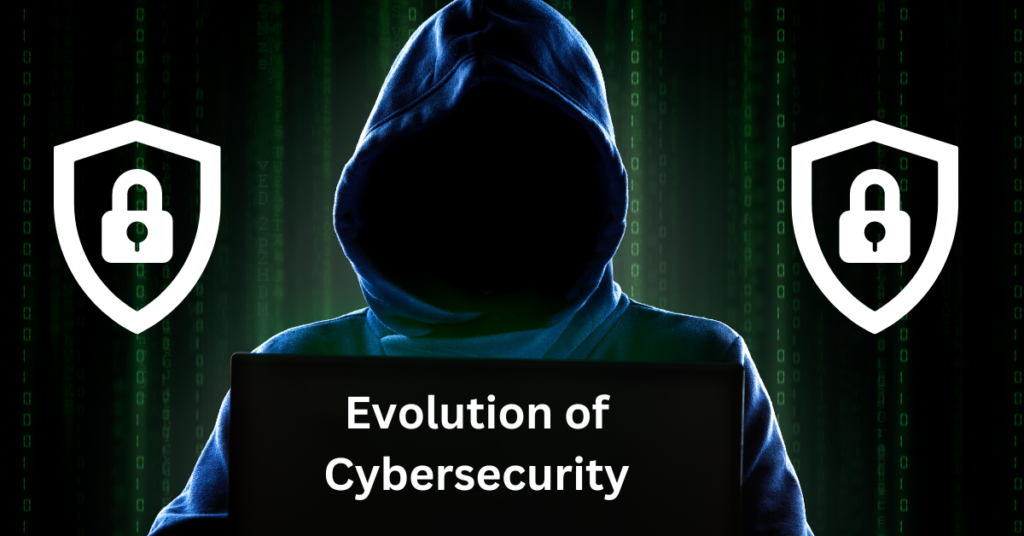The evolution of cybersecurity can be traced back to the early days of computing when security measures were minimal and the internet was a relatively very small network. In the early 90s, firewalls were the common method of protecting networks and data from cyberattacks. Now, this field of cyber security has a wide range of technologies:
- Intrusion detection systems
- Threat intelligence
- Security information and event management (SIEM)
Here’s an outline of the key phases:
1. The Early Days (1960s – 1970s): Pre-Internet Security
- Mainframes and Closed Networks: In the 1960s and 1970s, computers were large mainframes used primarily by governments, research institutions, and large businesses. Since these systems operated in isolated environments, security was largely about physical protection of hardware and data.
- Passwords Introduced: The idea of cybersecurity first emerged when users needed to safeguard access to mainframe systems. In 1961, passwords were introduced at MIT as a way to control access.
2. The Emergence of the Internet (1980s – 1990s): Network Security
- ARPANET and Early Viruses: As ARPANET, the precursor to the modern internet, expanded, the first notable cybersecurity threats emerged. In 1988, the Morris Worm became the first major network-based cyberattack, bringing attention to the potential dangers of networked computers.
- Rise of Antivirus Software: The first antivirus programs appeared in response to the growing problem of computer viruses, such as Brain (1986), one of the earliest boot sector viruses.
- Firewalls and Basic Encryption: As networks grew, firewalls were introduced in the late 1980s to prevent unauthorized access. Encryption methods also began to improve, setting the stage for secure communication.
3. The Internet Boom (1990s – Early 2000s): Web Security
- Rise of Web-Based Threats: The commercialization of the internet led to a massive increase in the number of connected devices, which in turn spurred an increase in cybercrime. Hackers and malicious groups started targeting websites, email systems, and data networks.
- Growth of Firewalls and Intrusion Detection Systems (IDS): Firewalls became more sophisticated, while intrusion detection systems began to monitor and analyze traffic for signs of malicious activity.
- E-commerce Security: With the rise of e-commerce, securing online transactions became very critical. The introduction of SSL (Secure Sockets Layer) encryption in the mid-90s allowed for secure online payments.
4. The Age of Advanced Threats (2000s – 2010s): Data Security and Malware Proliferation
- Phishing, Ransomware, and APTs: Cybercriminals diversified their tactics, using phishing, ransomware, and advanced persistent threats (APTs) to target sensitive data and intellectual property. Social engineering attacks became more sophisticated, exploiting human vulnerabilities.
- Regulatory Compliance: Governments around the world began enforcing regulations such as the Health Insurance Portability and Accountability Act (HIPAA) in 1996 and the Payment Card Industry Data Security Standard (PCI DSS) in 2004, mandating companies to protect sensitive data.
- Zero-Day Exploits and Advanced Defense Mechanisms: The use of zero-day vulnerabilities (previously unknown security flaws) increased, necessitating faster and more proactive security measures, including regular patch management and advanced threat detection systems.
- Security Information and Event Management (SIEM): The early 2000s also saw the development of SIEM systems, which aggregate and analyze data from multiple sources to detect security threats in real time.
5. Cloud Computing and IoT (2010s – Present): Expanding the Attack Surface
- Cloud Security: As businesses began moving data and applications to the cloud, cybersecurity challenges evolved. Cloud providers introduced sophisticated tools to secure data, but the shared responsibility model emphasized that organizations still had to implement their own security measures.
- Internet of Things (IoT): The proliferation of IoT devices greatly expanded the attack surface for cybercriminals. Securing interconnected devices with varying levels of security is now a major challenge.
- Cybercrime as a Service (CaaS): Cybercrime became more organized, with underground marketplaces providing tools, services, and even customer support for launching attacks.
- Machine Learning and AI in Security: Today, machine learning and artificial intelligence (AI) are increasingly used in cybersecurity to detect threats and vulnerabilities more quickly and accurately. These tools can process massive amounts of data, identify anomalies, and react to threats in real time.
- Ransomware Epidemic: Modern ransomware attacks, such as those on large corporations and municipalities, have grown in scale and impact, prompting a global focus on ransomware defense.
6. Future Trends in Cybersecurity
- Quantum Computing Threats: As quantum computing technology advances, it poses a potential threat to current encryption methods. Quantum-resistant encryption algorithms are already being researched to prepare for this.
- AI-Driven Attacks: Just as defenders are using AI, attackers are beginning to explore AI for more sophisticated, autonomous attacks. Defending against these AI-driven threats will be a major focus.
- Zero Trust Architecture: This security model assumes that threats exist both outside and inside the network and enforces strict verification at every access point, rather than relying on traditional perimeter-based defenses.
Conclusion
The evolution of cybersecurity reflects the dynamic and ever-changing landscape of digital threats. As technology continues to advance, cybersecurity measures will need to become increasingly sophisticated to keep up with both new and evolving threats. The integration of AI, cloud security, and advanced cryptographic techniques are likely to define the future of cybersecurity.
